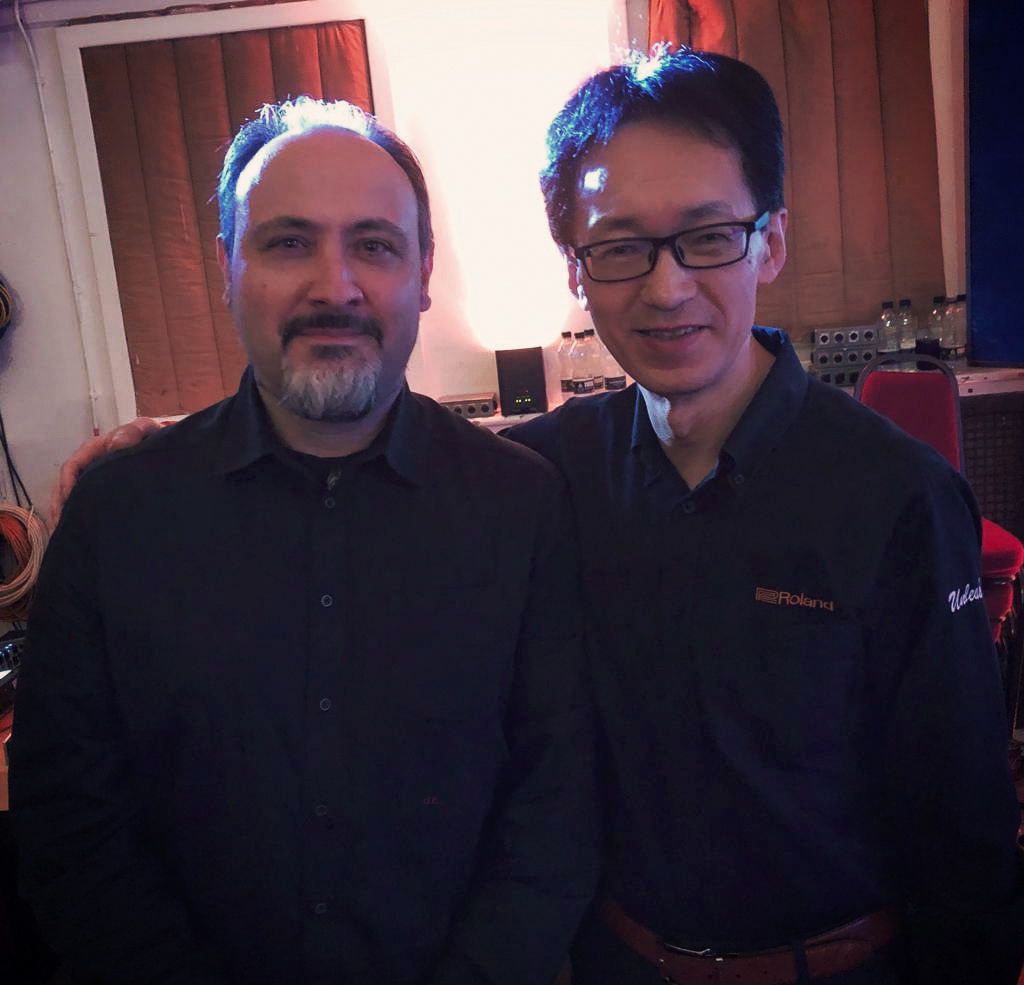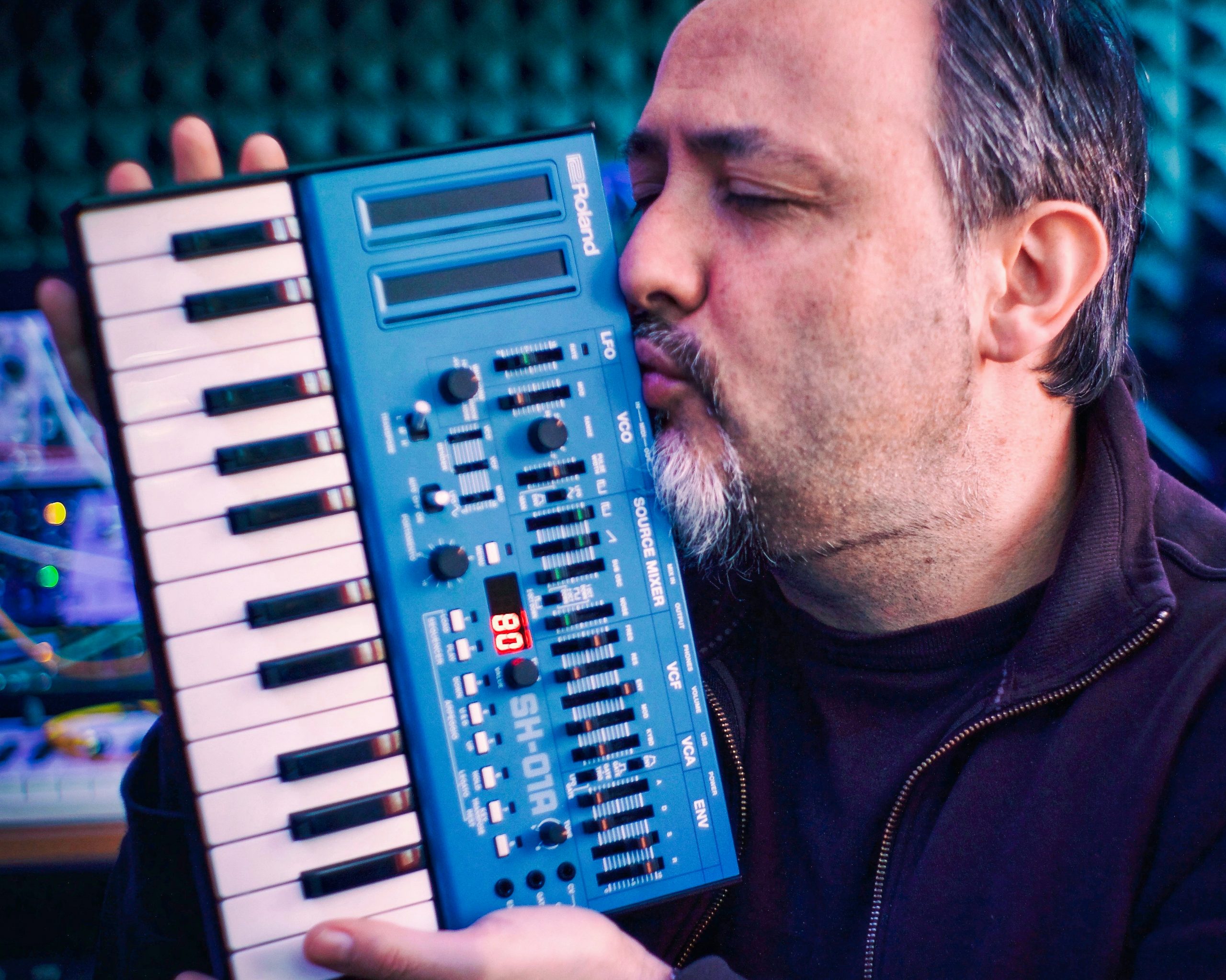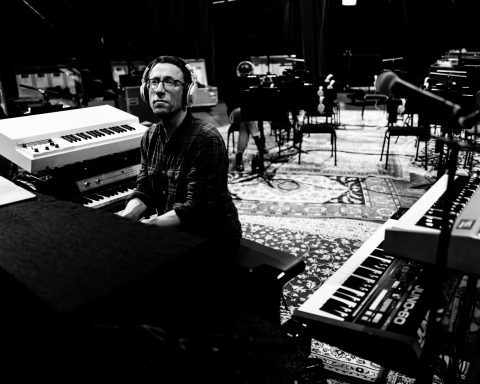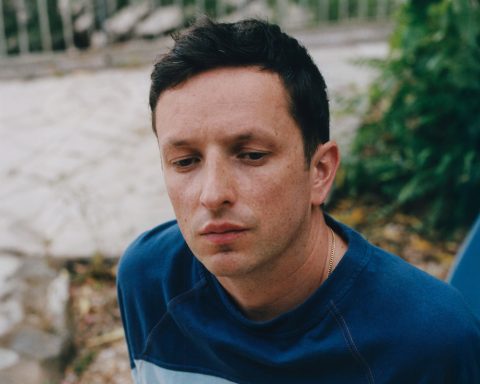When Gianni Proietti, aka Gattobus, got his first Roland keyboard, he was only 16 years old. Thirty years later, he’s an expert sound designer for instruments like the SYSTEM-8, FANTOM, JUPITER-X, and others. Even in the face of tragedies and setbacks, the multi-talented musician never abandoned his passion. In this tell-all interview, he reveals the secrets behind his success.
Your Instagram post celebrating the 30th anniversary of your first Roland keyboard is touching. Looking back now, can you pinpoint the moment when you became a fan?
My first contact with a Roland keyboard was when I was 12, in an old theater near the church I attended. It was a JUNO-106. It struck me like a thunderbolt, and I immediately asked my parents for piano lessons. My music idols, Elton John, Pink Floyd, a-ha, and Duran Duran, all had Roland synthesizers, so the brand became a kind of religion to me. But my parents couldn’t afford to buy Roland instruments at the time, so they found me a Farfisa keyboard instead. I was so obsessed that I ended up drawing the Roland logo with a white permanent marker on the back.
Then came the Roland E-70, correct?
When the E-70 came out, for me, it was love at first sight. At 16, the age in Italy when you can ride a motorbike, I asked my parents for a Roland keyboard. I was the only one among my friends without a motorbike, but I didn’t care. I finally had a real Roland keyboard.
It sounds like you knew exactly what you wanted to do. But things don’t always go according to plan. You ended up studying computer engineering and took a detour before you found your way back. What pulled you away from music?
When I was 22, I lost my father. Then, my mother got seriously ill, so I had to drop out of the University of Siena and find a job. I ended up working at a big music store in my town for a while. From 1999 to 2016, I worked there, learning everything I could by reading all the manuals, books and playing every synthesizer on the market. I also had a band at the time; we played pubs and private parties.
In 2011, my wife died of cancer, and two months later, I lost my mother to cancer. A few years after, that the store went bankrupt, and I lost my job. In the midst of all that, I felt the need to hold on to the good things around me: my daughter and music. I started teaching at a private music school and continued to upload videos on my YouTube channel, Gattobus.
"When the E-70 came out, it was love at first sight. At 16, the age in Italy when you can ride a motorbike, I asked my parents for a Roland keyboard."
How did you connect with Roland?
While I was working at the music store, I met Max Fattori, who is now the European Sales Product Manager for Roland Synth/Keyboard. In 2015, he wanted to get my opinion on the JD-XA, so he sent one for me to try out. Less than a week later, I’d programmed a bunch of sounds and shot two videos for the “10 covers in 10 minutes” series.
Those two videos got over a million views, and that was the beginning of everything. I remember Max saying something like, “Keep playing it and don’t even dare give us back the JD-XA.”
So, that’s how you started designing presets for Roland instruments.
Yes, a few months later, I received the first SYSTEM-8 prototype and started programming factory contents. I started with eight patches, then Japan asked for another 16. I think I ended up programming more than 70 presets. Today, I’m still involved in programming content for FANTOM, JUPITER-X, and some other products I cannot mention yet.
Which of your presets are your favorites at the moment?
I’m fond of “Synth Edge” on SYSTEM-8, “Fantom Overture” on FANTOM, and the Pink Floyd-inspired “Shine Pad,” which is preset #1 in ZENOLOGY. Among my latest works, I’m very happy with the Hyperwave ZEN-Core sound pack and “Analog Polysynths.”
"It’s so stimulating, but also intimidating. I'm creating something to inspire other musicians to make new music."
What’s it like to create factory presets for Roland synthesizers?
It’s so stimulating, but also intimidating. I’m creating something to inspire other musicians to make new music. It’s almost like their creative process starts with me and the little room where I work. Still, I always have a clear idea of what I’m doing. I don’t start programming until I have something specific in mind. Luckily, the engineers in Japan give me a lot of freedom, so I get to create sounds that I’d like to find in a synth when I buy it.
Which instruments do you feel the most drawn to as a composer at the moment?
FANTOM, due to its raw potential and power. SYSTEM-8, because it’s like a son to me. My Eurorack modular system, which cost me a fortune. JUPITER-XM, which is perfect for outdoor jams. And last but not least, my blue SH-01A. I love the way it sounds, and it’s so cute.

Speaking of Eurorack, I must say your latest Gattobus composition on YouTube, “Circles,” is absolutely magical. How did you get into modular synthesis? Are you working on an ever-growing wall of modules or do you prefer to keep it simple?
Thank you. Well, I believe every synth addict ends up with a little modular system sooner or later. But I’ll never have a wall of modules because it would be impossible to use all that effectively. The inspiration behind my system is the West Coast modular approach. Once I had all the pieces, I stopped there.
It’s better to build with purpose instead of aiming for a wall of modules. For instance, I have a Roland SYSTEM-500, which sounds very similar to the old SYSTEM-100. But I use them in completely different ways.
You started the Gattobus YouTube channel back in 2007. Today, you have tens of thousands of subscribers, a lot of whom turned into loyal fans of your work. What gave you the idea to shoot synth demonstration videos during a time when YouTubers didn’t even exist?
I used to play with my synths every day after dinner. One day I thought, “Why not share what I’m doing by shooting and uploading a video?” It wasn’t for showing off—I did it because it felt good. I think that’s the reason for my early success. As you know, I had to stop uploading videos for a few years. But these days, I upload new videos whenever I have the time.
"One day I thought, 'Why not share what I'm doing by shooting and uploading a video?' It wasn’t for showing off—I did it because it felt good."
What’s on the horizon for Gattobus?
A lot of new projects. I can’t talk about them in detail, but I’m working with Roland, and I’ll be living my dream at full speed until the end. All my music is available on my Bandcamp page, and I’ll share a new album containing a collection of my YouTube hits soon.







